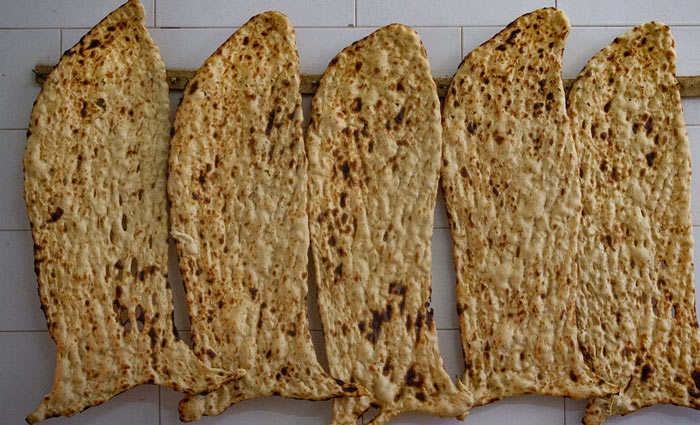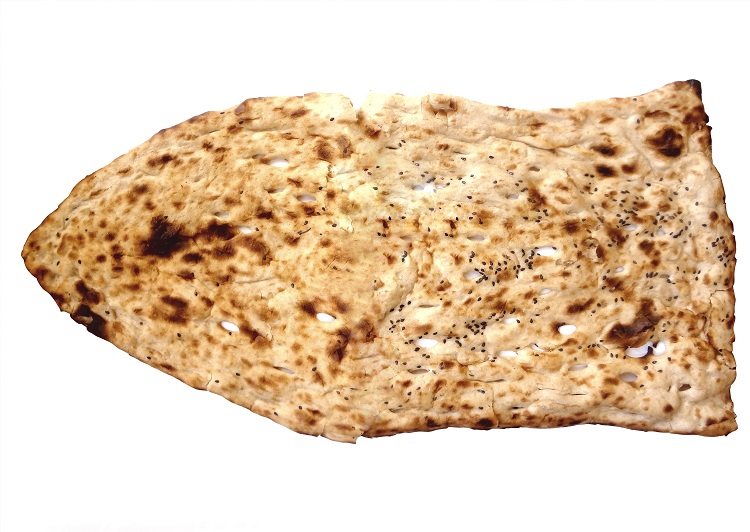How to Make Homemade Sangak Bread
Sangak bread, a staple in traditional Iranian cuisine, has captivated food lovers with its unique taste and texture for centuries. Believed to have originated during the Sassanian Empire, this delightful flatbread, known as Homemade Sangak Bread, is more than just a culinary delight—it’s a piece of history. Combining simple ingredients like flour, water, and sesame seeds, it’s not only tantalizing for the taste buds but also offers a lighter calorie option compared to other bread varieties. Join us as we explore the art of baking Homemade Sangak Bread, where every bite tells a story.

Ingredients
Serves 3 people
| Ingredient | Amount |
|---|---|
| Flour | 2 cups |
| Yeast | 1/2 teaspoon |
| Warm water | 2 cups |
| Butter | As needed |
| Sesame seeds | As needed |
| Salt | As needed |
Instructions
Step 1: Prepare the Yeast Mix – Combine 1/3 of the flour with the yeast in a mixing bowl. Gradually add one cup of warm water while stirring continuously until well incorporated.
Step 2: Ferment the Yeast Mix – Cover the bowl with plastic wrap and let it rest in a warm environment for 24 hours. Ensuring the water temperature is around 45 degrees Celsius helps in optimal yeast activation.

Step 3: Prepare the Dough – In a separate bowl, mix the remaining flour, the second cup of warm water, and salt until a uniform dough forms. After the initial mix has fermented for a day, blend it into the new dough mixture.
Step 4: Knead and Populate with Yeast Dough – Knead the mixture thoroughly until it’s smooth and elastic. Cover it again and allow it to rest in the refrigerator for an hour.
Step 5: Preheat the Baking Surface – While the dough rests, preheat the oven to 180 degrees Celsius, and place a baking tray filled with washed pebbles in the oven to heat.
Step 6: Shape the Dough – On a clean and moist surface, roll out the dough. Keeping a bowl of water handy helps in managing the stickiness.

Step 7: Baking the Bread – Once the oven is ready, lay the dough over the hot pebbles. Brush with butter or oil to prevent sticking, sprinkle sesame seeds generously, and bake until golden brown.
Step 8: Finishing UP – Flip the bread midway, ensuring it bakes evenly on both sides. Once baked, allow to cool slightly before removing from the stones.
Pro Tips
Maintain an accurate temperature for the dough fermentation process for optimal yeast activation. Use a water bowl to manage dough stickiness while shaping. The key to authentic Homemade Sangak Bread is baking it on hot stones or pebbles to achieve its distinctive texture.
Frequently Asked Questions
Yes, Sangak Bread can be made stovetop by using a large skillet filled with pebbles heated over medium flame. Ensure even heat distribution to replicate oven conditions.
You can experiment with adding whole-grain flour for a healthier version or mix in spices and seeds such as cumin or nigella seeds to enhance flavor.
Ensure your yeast is fresh and active, and the water temperature is suitable for yeast fermentation. Avoid rushing the resting stages for the yeast to properly activate.
